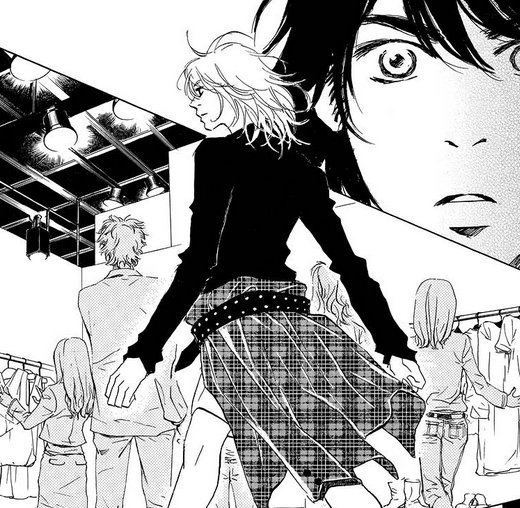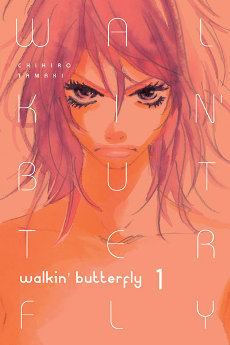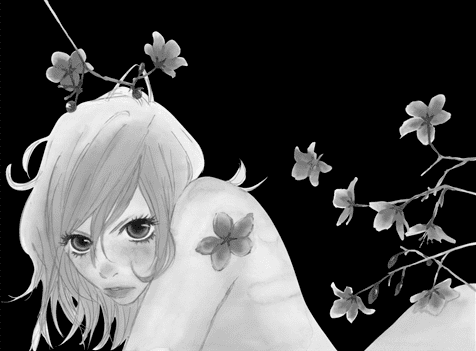7 /10 1 Votes7
Magazine Vanilla Volumes 4 Written by Chihiro Tamaki | 7.1/10 MyAnimeList Demographic Shōjo / Josei Original run 2003 – 2007 | |||||||||||||||||||||||||||||||||
 | ||||||||||||||||||||||||||||||||||
Published by KodanshaKadokawa X MediaOhzora Publishing Similar Ns' Aoi, Hanayome to Papa, Guren Onna, Tsubasa no Oreta Tenshitachi, Bull Doctor | ||||||||||||||||||||||||||||||||||
Walkin' Butterfly is a shōjo manga by Chihiro Tamaki. It was serialized by Kodansha in the manga magazine Vanilla until the magazine ceased publication in 2003, then by Kadokawa X Media by mobile phone until the series concluded in 2007. The series was collected in four bound volumes by Ohzora Publishing. The manga is licensed in North America by Aurora Publishing. The series was adapted as a live-action drama broadcast on TV Tokyo from 11 July to 26 September 2008. It depicts a young woman's struggles to overcome her insecurity about her height by becoming a model.
Contents

Plot

Walkin' Butterfly follows the character of Michiko, a young woman with above average height for a Japanese woman. Because of this and her job as a pizza delivery person, Michiko is filled with insecurities and doubts. During a delivery at a fashion show Michiko is mistaken for a model and forced out onto the runway. Because of this Michiko ends up becoming entangled in the world of modeling and noticed by a fashion designer who tells her that until she truly sees herself, she will never be a true model.
Characters



Development
According to Chihiro Tamaki in an interview printed in the North American edition of volume one, the story came about because she had an editor who liked to look at models, but she thought that a story just about the fashion industry as a business would be boring: "So the first thing I did was to decide upon a girl as a protagonist who would have average, ordinary characteristics—nothing outstanding, like celebrities who are known for extremely good or bad characteristics. I developed the story of the heroine Michiko overcoming her inferiority complex about being tall and rising to become a top model." The "butterfly" in the title is intended both to be a metaphor for a growing girl and to represent a beautiful model, while "walkin'" came from the images of a model walking down a modeling runway and of a struggling Michiko walking instead of flying. Tamaki stated that her intent with the story is not just depicting Michiko "growing up and becoming independent", but also to highlight Michiko's romances.
Tamaki claimed that, as a result of doing research for the series, her favorite model became Ai Tominaga, and that she was flattered when Tominaga wrote, in an endorsement for the first volume of the Japanese edition, that there were things she had in common with Michiko. Tamaki cited as specific influences Ashita no Joe for her plots and Rumiko Takahashi's Urusei Yatsura for her characters.
Manga
Walkin' Butterfly was written and illustrated by Chihiro Tamaki. It was originally serialized by Kodansha in the shōjo manga magazine Vanilla aimed at older teenage girls; after Vanilla ceased publication in 2003, Walkin' Butterfly was serialized by Kadokawa X Media by mobile phone as part of its Comics Walker service until the series concluded in 2007. Serial chapters were collected in four tankōbon volumes by Ohzora Publishing under the Ease Comics imprint. The manga is licensed in North America by Aurora Publishing, which marketed the series as a josei manga aimed at young adult women. The first three volumes were published in English between August 2007 and May 2008; volume four was originally scheduled for September 2008, but has been indefinitely delayed. Walkin' Butterfly is available in English on the Internet from the Netcomics publisher. It is also licensed in French by Asuka, in Polish by Taiga and in Italian by JPOP Edizioni.
Drama
The live-action drama, titled Walkin'☆Butterfly (ウォーキン☆バタフライ, in katakana instead of rōmaji like the manga), was broadcast in 12 episodes on TV Tokyo starting on 11 July 2008, and running until 26 September. It starred Aoi Nakabeppu as Michiko Torayasu and Jun Toba as Kou Mihara. The opening theme was "Seiippai, Bokura no Uta" by ghostnote and the ending theme was "Ima Fuku Kaze" by Hi Lockation Markets. Some of the actors appeared in the theatrical movie Flying☆Rabbits playing the same characters as in the drama.
Reception
Reviewers have called Walkin' Butterfly an entertaining but not original series. Anime News Network compared the story to a josei manga version of a shōnen tournament series aimed at boys, saying "nothing here about the plot or the characters is particularly believable or novel. Instead, it is comfortably formulaic; the pleasure of Walkin' Butterfly lies not so much in the discovery of what happens next but rather in how what happens next happens." Mania.com described the series as "not particularly realistic," but called it "an interesting balance of comedy and poignancy." The character of Michiko was cited by more than one reviewer as a key appeal of the series. Tamaki's art received mixed reviews, with several reviewers praising it, comparing the style to Moyoco Anno's and Yayoi Ogawa's, and others criticizing it as "standard" and sketchy. Reviewers criticized later volumes for allowing Michiko's mood swings to get tiresome, and for switching to a more "standard" storyline. The English edition was criticized as sometimes using awkward language and typography.
Walkin' Butterfly was voted the 2nd best new josei manga in English of 2007 by readers of About.com. The series was a finalist for YALSA's 2008 list of Great Graphic Novels for teens.
